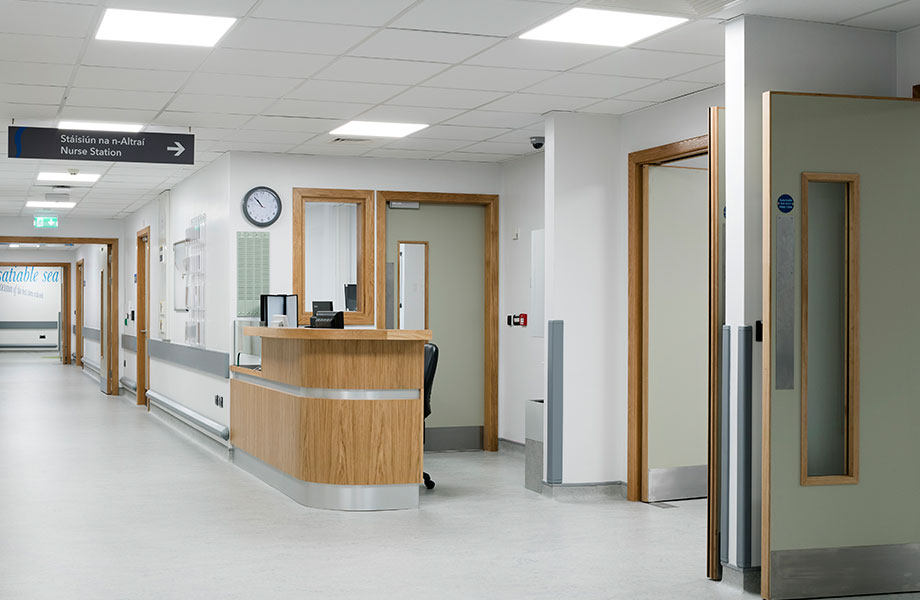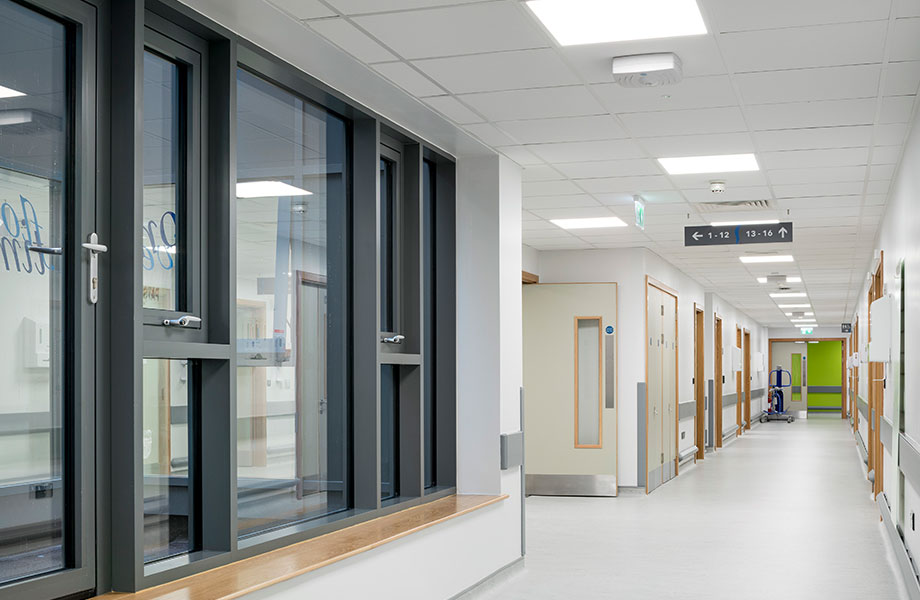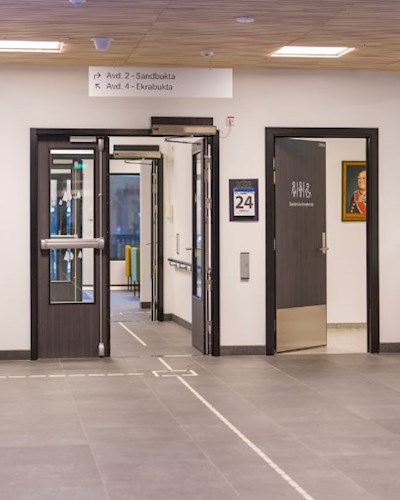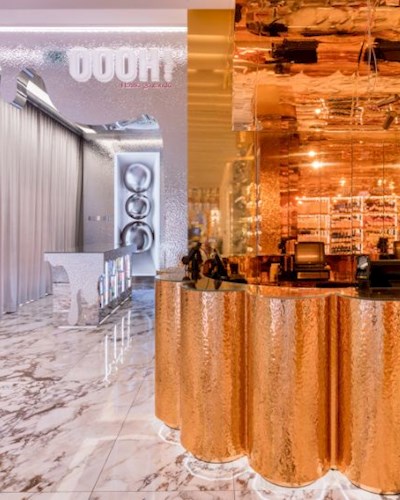University Hospital Galway selects Formica<sup>®</sup> laminate in €18 million development
University Hospital Galway selects Formica® Laminate in €18 million development
As part of a newly completed 75-bed ward block Formica® Laminate has been selected for the interior door facings fitted furniture and integrated panel systems (IPS) of University Hospital Galway.
Moloney O'Beirne Architects were commissioned to work on the hospital’s €18 million development and specified Formica® Laminate due to its performance credentials. The impact resistant qualities of the surfacing material, ease of maintenance, and availability in a wide range of decors being primary factors.
Laminate is often favoured for high traffic areas such as hospitals due to its hygienic qualities. Cleanliness is vital to ensuring high quality patient care – failure to meet required standards can lead to the spread of infections, the closing of wards, and impact the health of patients and staff. Since Formica laminate is inert and does not support microbial growth, it is ideal for applications where cleanliness and hygiene are of paramount importance.
As a completely sealed surface, Formica Laminate is impervious to liquids and easy to clean and maintain. In a sector where budgets are often tight, and the maintenance cost of material comes under scrutiny, surfacing that offers value for money without compromising on functionality is understandably favoured by architects and facility managers.
In the instance of University Hospital Galway, Formica laminate in the colours of Seed, Thistle and Sandstone have been applied to fitted furniture and to over 400 door facings. Delivering seamless design integration to the IPS panels is Formica laminate in the grey tone of Folkstone. The colours chosen for the project were selected for their soothing attributes in order to help calm patients and reduce stress.
Formica laminate’s durable surfacing assists in the design of environments where a high level of hygiene is essential. In a wider context the material also enables hospitals to look better for longer with the minimum of effort while offering aesthetic options to potentially complement recovery.





